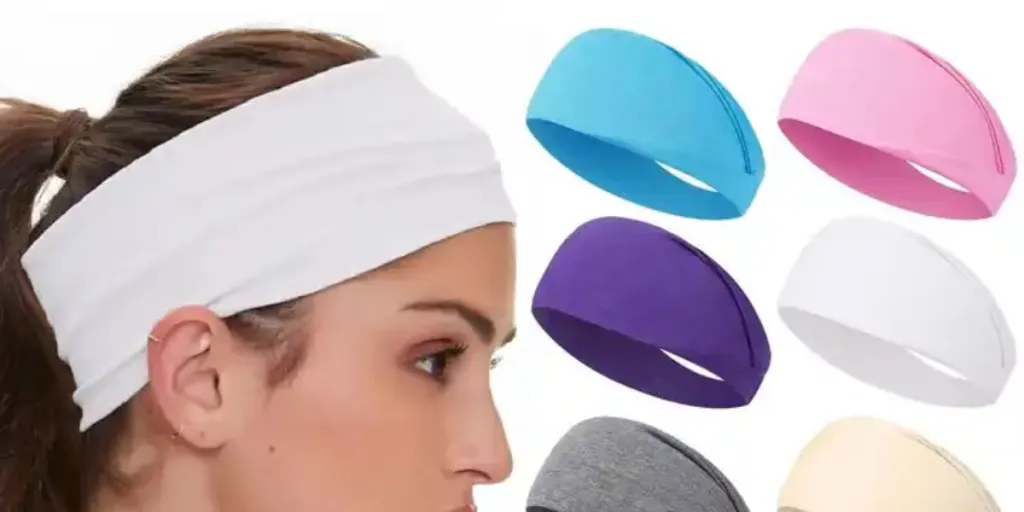Sports headbands have grown to be integral accessories for athletes, providing both aesthetic and functional benefits. These headbands, which are worn across the forehead, add a touch of style to athletic attire. They also help in retaining sweat and offer a comfortable fit suitable for matches and heavy exercise.
This article gives an overview of the market for headwear and highlights the main types of sports headbands available today. It also offers a guide to the key factors to consider when purchasing a sports headband for your store.
Table of Contents
Market share of headwear
Types of sports headbands
Key factors to consider when buying sports headband
Summary
Market share of headwear
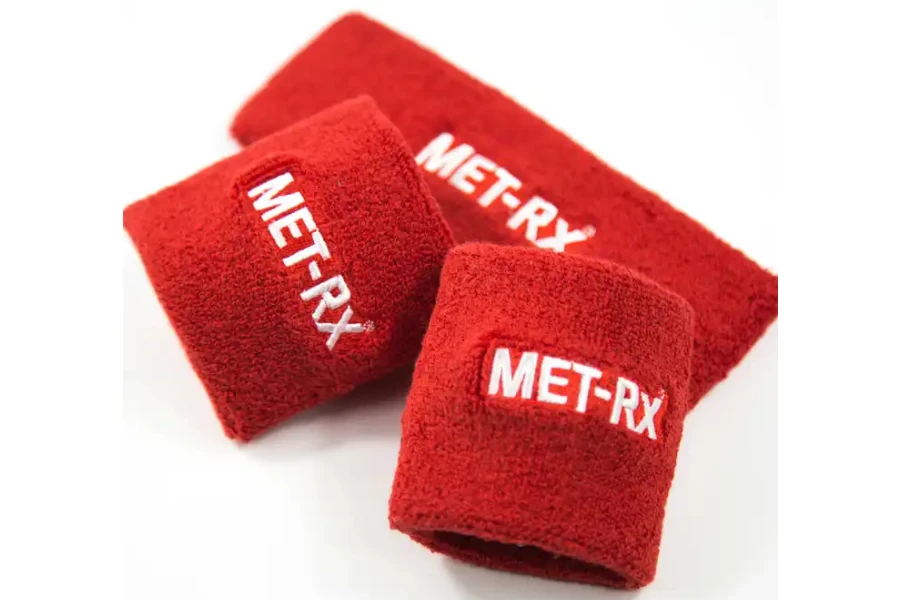
According to Brainy Insights, the worldwide headwear market is projected to reach USD 54.8 billion by the end of 2032, growing at a compound annual growth rate (CAGR) of 7% from 2023 to 2032. The escalating call for sports headwear is underpinned by the pervasive athleisure trend, where sports clothing seamlessly transitions into casual wear. Also, the rising emphasis on health and fitness recognition has propelled sports headbands into the mainstream.
Regions with high demand for sports headbands are Europe, North America, and the Asia-Pacific. Europe is expected to witness the quickest boom, fueled by its lively lifestyle, outdoor sports, and a sturdy inclination towards fashionable sportswear.
The headwear market saw a strong presence in 2022 from the Asia Pacific region, accounting for a significant 40% share of market revenue. Manufacturers in this area are optimistic about witnessing substantial growth, attributing it to the increasing demand for accessories that enhance one’s overall appearance.
Types of sports headbands
1. Elastic headbands
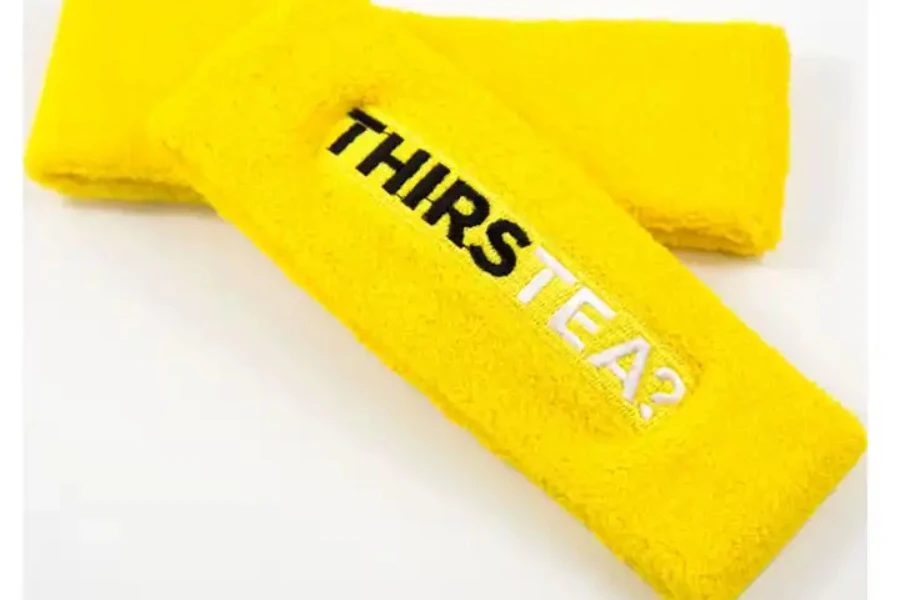
Elastic headbands are a popular and versatile choice amongst athletes, health enthusiasts, and individuals engaged in various bodily sports. These headbands are characterized by their stretchable nature, offering a comfortable fit around the head without inflicting soreness. The headbands are made from elastic materials such as nylon and spandex.
Elastic headbands are preferred in a lot of sports activities, including running, yoga, and basketball. Their simplicity and effectiveness make them a good choice for casual trainers and professional athletes.
Pros
- Elastic headbands are often comfortable to wear, providing a secure yet flexible fit around the head.
- These headbands are generally more budget-friendly compared to some specialized alternatives.
- The headbands are easy to put on and take off, making them a convenient accessory for quick, on-the-go use.
- They effectively help in keeping hair away from the face during various activities, including sports and workouts.
Cons
- Some elastic headbands are too tight for some individuals, causing discomfort during extended wear.
- Over time, the elastic material loses its stretchiness, reducing the headband’s effectiveness and requiring replacement.
- Depending on the design and individual hair type, elastic headbands can slip or slide during vigorous physical activities.
2. Moisture-wicking headbands
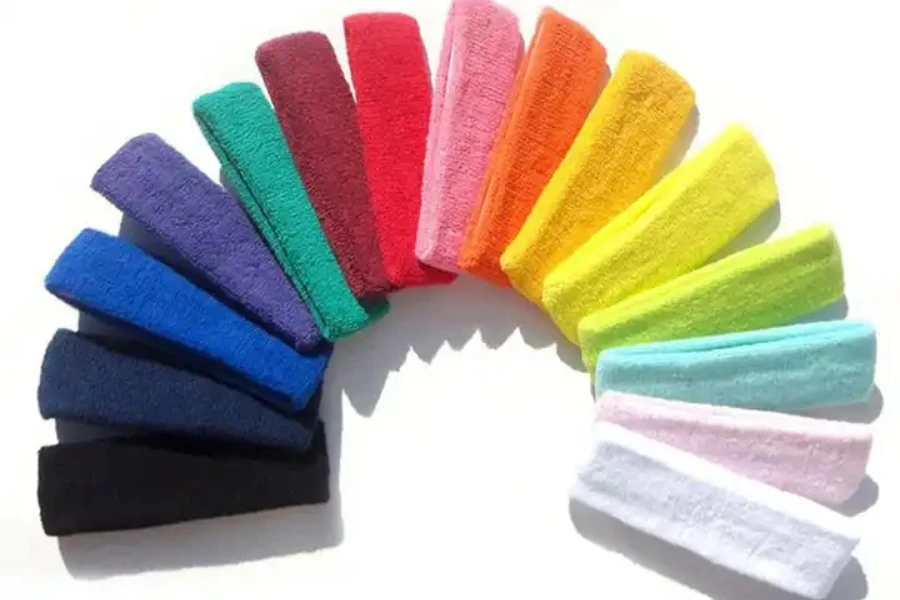
Moisture-wicking headbands have risen to prominence because of their specialized potential to control perspiration during intense physical sports. They are constructed from advanced moisture-wicking fabric like polyester or a blend of synthetic fibers. These headbands excel at pulling moisture away from the pores and skin, causing rapid evaporation.
They are widely used in persistent sports like walks, cycling, and trekking.
Pros
- Moisture-wicking headbands are designed to absorb and manage sweat efficiently, keeping the forehead and face dry during workouts or sports activities.
- These headbands contribute to temperature regulation by helping to dissipate heat during physical activities.
- Many moisture-wicking headbands are lightweight, adding minimal extra weight or discomfort during wear.
- The moisture-wicking properties tend to last longer than traditional fabric, providing prolonged effectiveness.
Cons
- Some individuals have skin sensitivities or allergies to certain moisture-wicking materials.
- High-quality moisture-wicking headbands can be more expensive than basic alternatives.
- The focus on functionality results in fewer style and design choices compared to regular fashion headbands.
3. Compression headbands
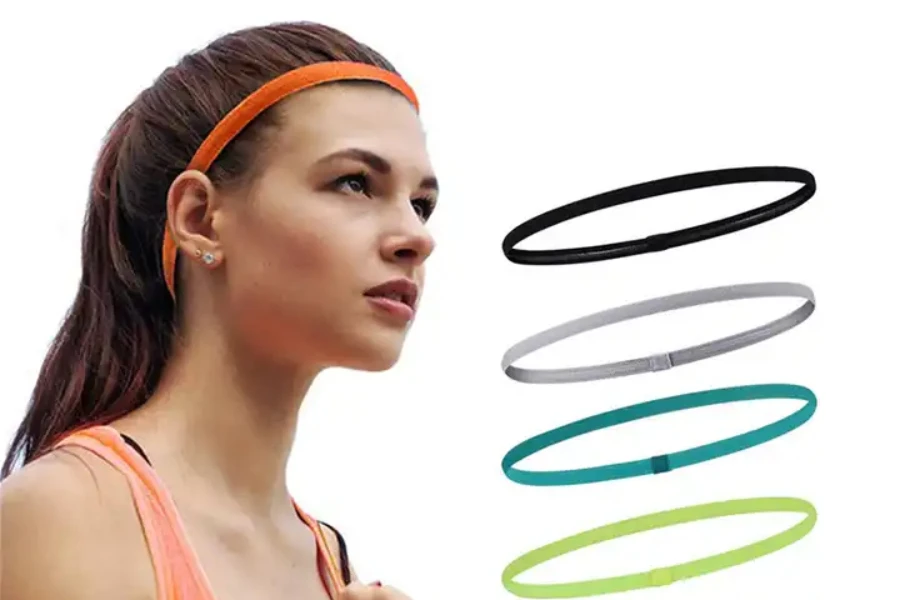
Compression headbands are designed with a focal point to offer a comfortable and steady fit. Typically crafted from a blend of spandex and nylon, these headbands provide a compression impact that facilitates blood circulation and reduces muscle vibration. Athletes in sports like tennis, football, and volleyball commonly wear them.
Pros
- Compression headbands can enhance blood circulation, potentially aiding in reducing muscle fatigue and speeding up recovery.
- The compression design offers a snug and secure fit, preventing the headband from slipping during intense physical activities.
- The compression can provide mild support to the muscles in the forehead and temples, especially during high-impact sports.
- Compression headbands are suitable for various activities, from sports to everyday use.
Cons
- Individuals with certain sensitivities find the constant pressure of compression headbands uncomfortable.
- Compression headbands have fewer style options compared to fashion-oriented headbands.
- Higher-quality compression headbands, especially those with additional features, can be more expensive than basic alternatives.
Key factors to consider when buying sports headband
1. Material
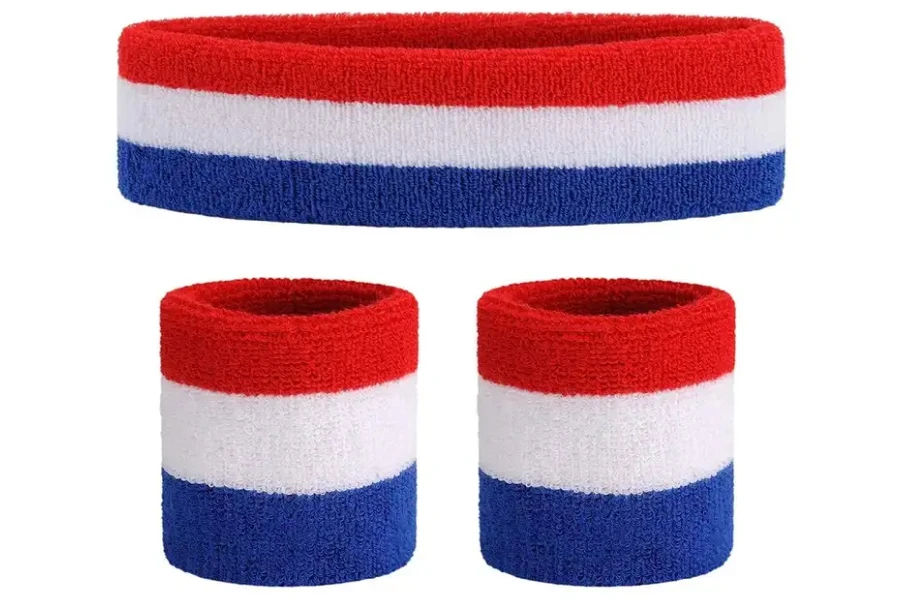
The material of a sports headband influences its performance and comfort. Common substances used in these headbands include cotton, polyester, spandex, and blends of these fabrics.
- Cotton – Cotton headbands offer breathability and comfort, making them ideal for various activities such as workouts. The natural fiber absorbs moisture, keeping the forehead dry during workouts or daily wear.
- Polyester – Polyester headbands provide durability and moisture-wicking properties, ensuring quick drying. The synthetic fabric is resistant to wrinkles and shrinking, making it suitable for active lifestyles.
- Spandex – Headbands with spandex offer excellent stretch and recovery, ensuring a snug fit without losing shape. This elastic material enhances flexibility and is commonly blended with other fabrics for added comfort during movement.
2. Versatility
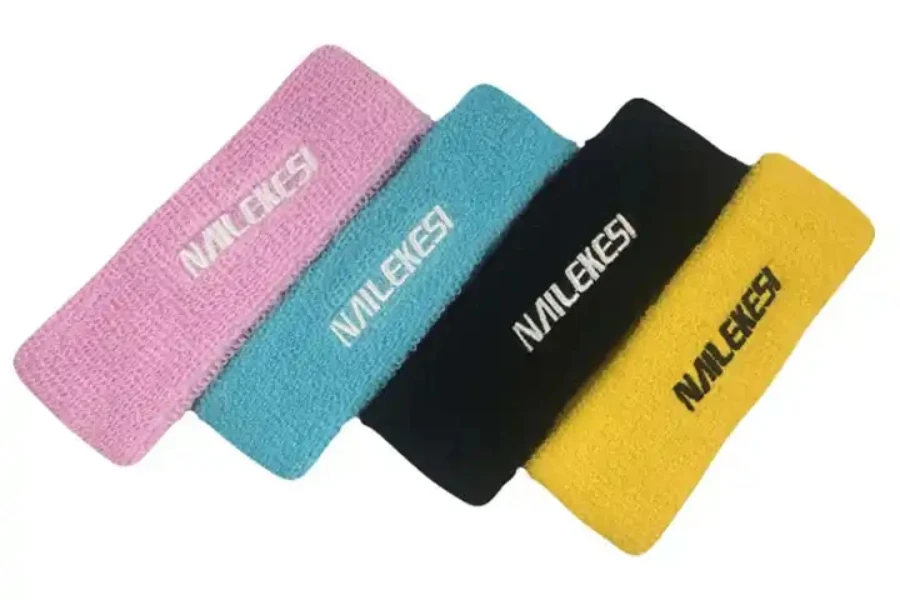
- The headband needs to remain strong in the course of dynamic actions, making sure it stays in the region without constant adjustments.
- Consider its suitability for both indoor and outdoor use.
- Take into account functions that provide warm temperatures in less warm situations or breathability in warm environments.
- Weather resistance is a key factor, specifically in cases where it may be used outside.
- A sports headband should be suitable for various physical activities, from running and cycling to yoga or team sports.
- Fashion versatility is worth thinking about, with a few headbands designed to transition from athletic settings to informal wear seamlessly.
- An adjustable headband ensures it can be comfortably worn by individuals with different head sizes, providing a secure fit for everyone.
- A high-quality sports headband should withstand frequent use and washing, ensuring it remains a reliable accessory for a range of activities over an extended period.
3. Price
When contemplating the purchase of headbands, there are typically three main price levels: low-end pricing for budget-conscious choices, mid-range pricing for a balance of quality and affordability, and high-end pricing for those seeking premium materials and designer appeal.
- Low-end pricing – At the low-end pricing level, buyers often consider budget-friendly options. These headbands are generally more affordable, making them accessible to a wide range of individuals. However, at this level, there are trade-offs in terms of material quality, durability, and design intricacies.
- Mid-range pricing – In the mid-range pricing level, buyers seek a balance between affordability and enhanced features. Headbands within this category offer better materials, improved comfort, and additional functionalities.
- High-end pricing – At the high-end pricing level, buyers prioritize premium quality, designer brands, and advanced features. Headbands in this category often boast superior materials, intricate designs, and carry a notable brand reputation.
4. Size
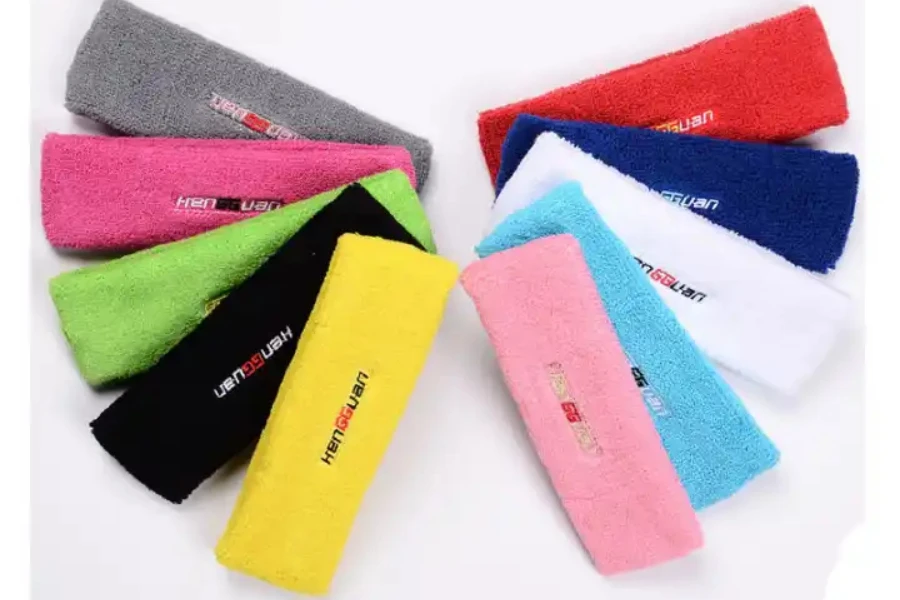
Sports headbands are often designed in a one-size-suits-most style due to their stretchable nature. The average width starts from 1 to 2 inches, catering to numerous users. The stretchable layout accommodates special head circumferences.
When selecting the proper size, don’t forget the head’s circumference and whether to pick a much broader or narrower headband. Checking the sizing charts provided by the manufacturers can assist in ensuring the right match.
5. Grip or non-slip features
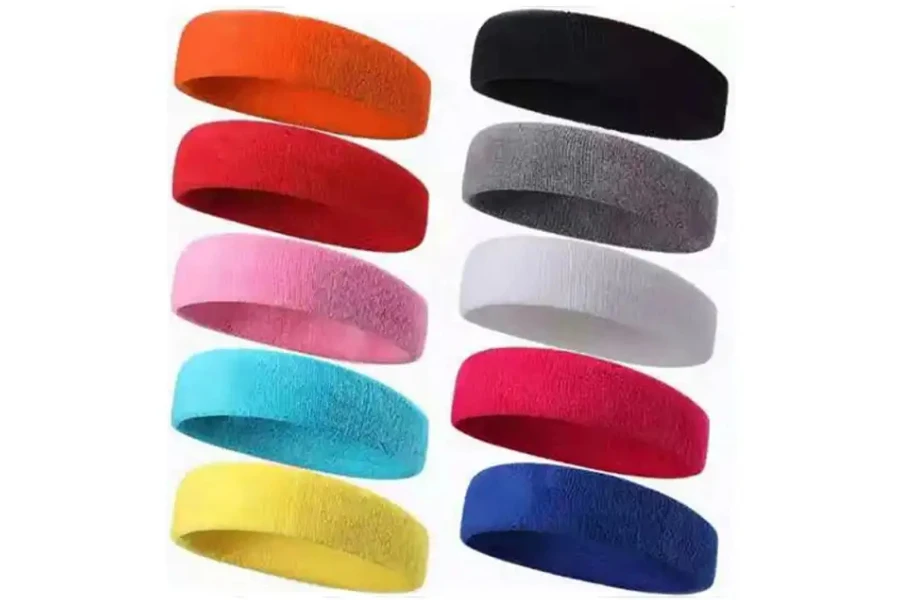
A key element of a sports headband’s effectiveness is its capability to stay in place during dynamic movements. Look for headbands with grip or non-slip capabilities, inclusive of silicone strips or internal linings which help in improving balance on the forehead. These functions also help to prevent constant readjustment, imparting a trouble-free experience in the course of sports and workouts.
6. Moisture-wicking ability
A good sports headband has to efficiently draw sweat away from the pores and skin, promoting evaporation and keeping the forehead dry. Common moisture-wicking substances encompass polyester and blends of artificial fibers.
Assessing the headband’s design, production, and the effectiveness of its moisture-wicking ability ensures that it not only offers comfort but also helps prevent issues like chafing. It also avoids infections associated with extended exposure to moisture.
7. Durability
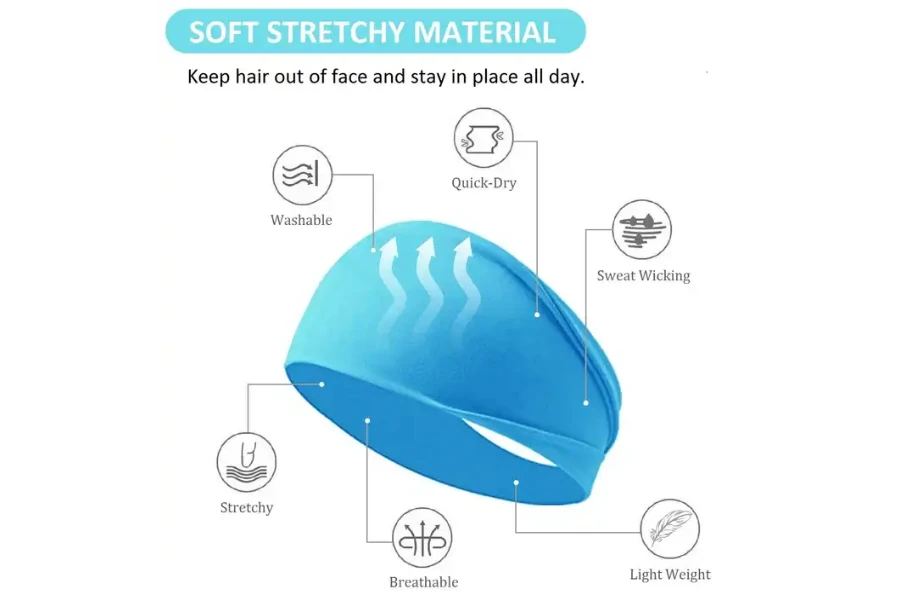
The lifespan of sports headbands varies primarily based on quality and production.
- Basic elastic or cotton headbands can last between six to 12 months with everyday use.
- The mid-range headbands, presenting reinforced sewing and higher-quality elastic, can go for 12 to 18 months.
- High-performance headbands, constructed from durable materials and designed for rigorous sports, can last beyond 18 months.
Summary
When embarking on the journey to purchase a sports headband, there are key considerations that can significantly impact the choice you make. Understanding the material, width, elasticity, price, and moisture-wicking capabilities are factors that ensure optimal comfort and performance during sports activities. Taking these aspects into account will help you make an informed decision that meets your business needs. For a diverse selection of sports headbands to fit your needs, explore a range of options at Alibaba.com.
